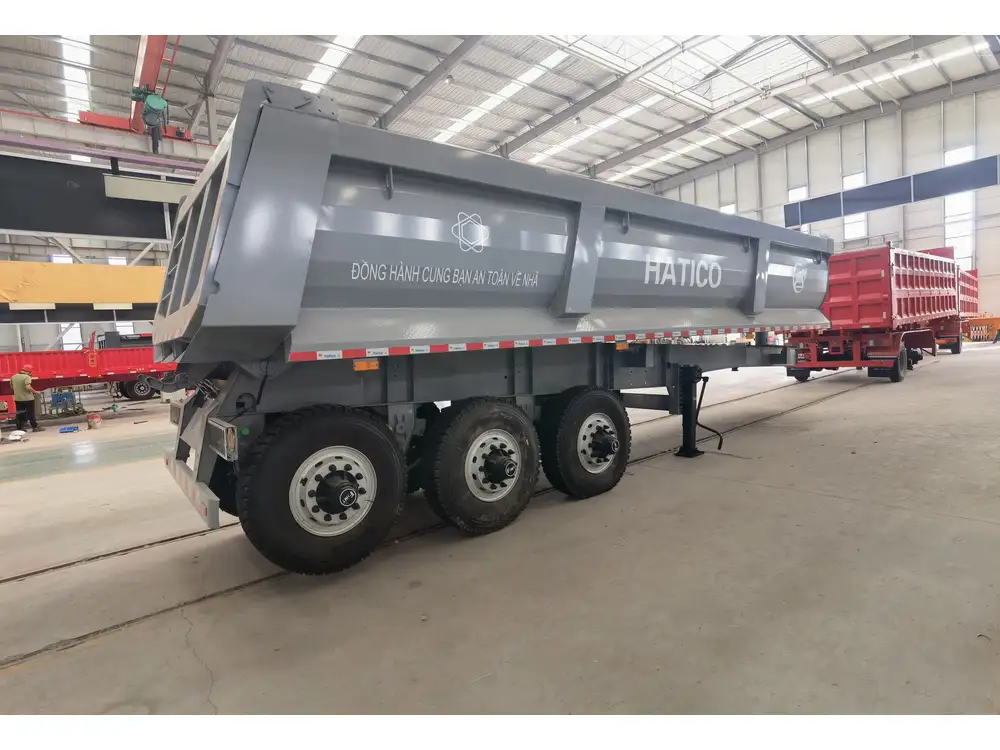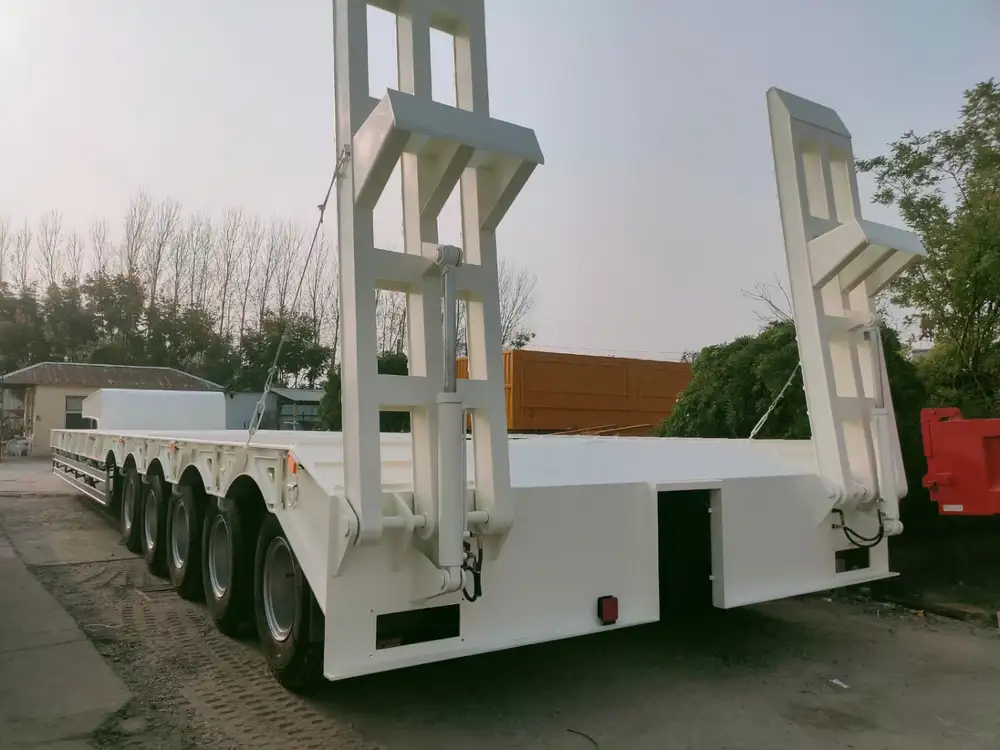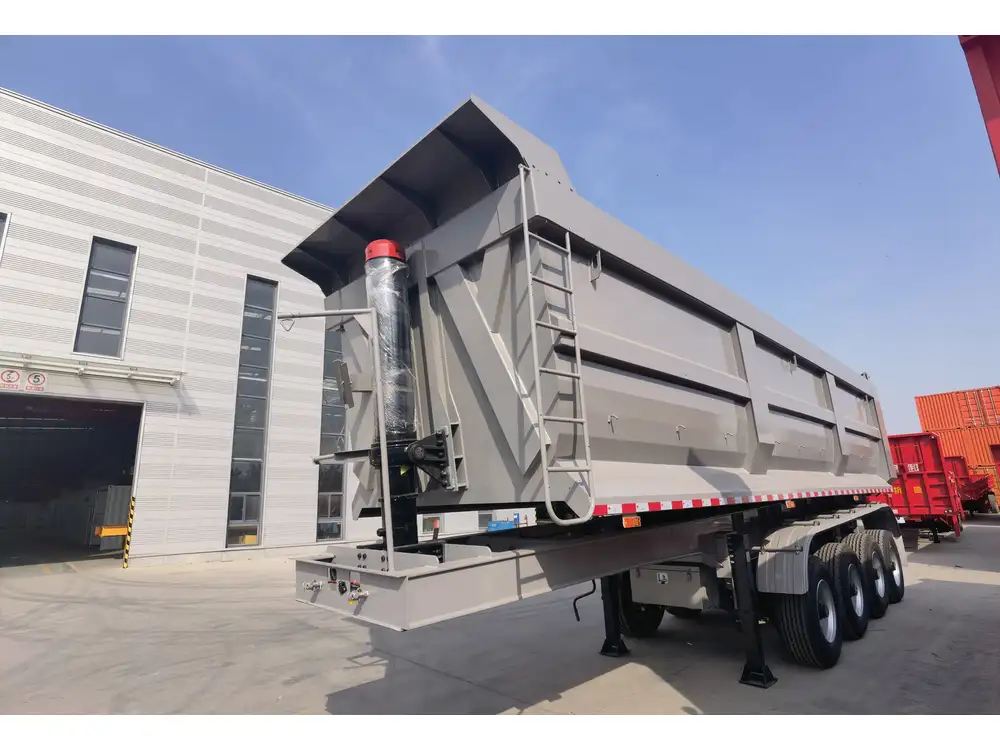Introduction
Dump trailers serve an essential role in various industries, from construction to landscaping. They offer the efficiency necessary for transporting heavy loads and simplifying the unloading process. However, encountering operational issues with your dump trailer—such as it refusing to lift—can lead to frustrating downtime. It’s crucial to diagnose the problem accurately to facilitate a quick resolution. This guide addresses the common issues why your dump trailer may not be going up and offers actionable solutions to keep your operations running smoothly.
Essential Components of a Dump Trailer
Before diving into the potential causes of a dump trailer not lifting, it’s vital to understand its primary components:
| Component | Description |
|---|---|
| Hydraulic System | Contains the hydraulic pump, cylinder, and fluid necessary for lifting the bed of the trailer. |
| Power Supply | Typically comprises a battery and electrical connections that power the hydraulic system. |
| Frame and Bed | The structural components of the trailer that hold the cargo and provide stability. |
| Control Mechanism | Includes switches or levers that initiate the lifting action. |
Understanding these components will facilitate a more precise diagnosis of the issue when your dump trailer won’t lift.

Common Reasons Your Dump Trailer Won’t Lift
1. Hydraulic Fluid Issues
Low Hydraulic Fluid: One of the most prevalent reasons a dump trailer fails to operate is low hydraulic fluid levels. If the fluid is insufficient, the hydraulic pump cannot generate the necessary pressure to raise the bed.
Air in the Hydraulic System: Air can enter the hydraulic system and create bubbles, severely hampering pressure. This phenomenon can stem from improper fluid changes or hose leaks.
Contaminated Hydraulic Fluid: If the hydraulic fluid is contaminated with dirt, debris, or moisture, it can impede the flow and function of the hydraulic system.
Solution: Regularly check the hydraulic fluid level and quality. Refill or replace contaminated fluid as necessary and bleed the system to eliminate trapped air.
2. Electrical Problems
Battery Issues: A weak or dead battery is often the first suspect when encountering lifting problems. An inadequate power supply can prevent the hydraulic pump from functioning properly.
Corroded or Damaged Wiring: Corrosion on electrical connectors or damaged wiring can disrupt power transmission to various components of the dump trailer, including the hydraulic system.
Faulty Switch: If the switch that controls the hydraulic system is malfunctioning, it may not relay the command to lift the bed.
Solution: Start by inspecting the battery’s charge level and ensuring it is fully functional. Examine the wiring harnesses for corrosion or visible damage, and replace any faulty switches you identify.

3. Hydraulic Cylinder Malfunctions
Leaking Cylinder: If there is an observable hydraulic fluid leak around the cylinder, it may need to be re-sealed or replaced.
Damaged Cylinder: Cracks or dents in the hydraulic cylinder can inhibit its ability to raise the trailer.
Solution: Inspect the hydraulic cylinder for any signs of compromise. If leaking or damage is noted, repair or replacement will often be necessary to restore lifting capabilities.
4. Mechanical Issues
Obstructions in the Bed Mechanism: Sometimes, debris, dirt, or foreign objects can obstruct the lifting mechanism, preventing the bed from rising smoothly.
Bent Frame or Hinges: A bent frame or damaged hinges can physically block the trailer from going up.
Solution: Conduct a thorough visual inspection to identify and rectify any physical obstructions. If parts are bent or damaged, professional assistance may be required to realign or replace them.
5. Pump Problems
Malfunctioning Hydraulic Pump: If the hydraulic pump has failed, it won’t generate the necessary pressure to raise the dump trailer.
Blocked Pump Intake: Debris or contaminated fluid can block the intake to the hydraulic pump, preventing it from working correctly.
Solution: Listen for unusual noises from the pump during operation. If you suspect it’s malfunctioning, replace it. Regular maintenance can help prevent blockage issues.

Troubleshooting Steps
A Step-by-Step Guide
To efficiently diagnose why your dump trailer won’t go up, follow these structured troubleshooting steps:
Inspect Hydraulic Fluid:
- Check the fluid level and top it off if necessary.
- Assess the fluid’s condition; if it looks dirty or contaminated, replace it.
- Bleed the hydraulic system to remove any trapped air.
Evaluate the Electrical System:
- Test the battery voltage, ensuring it meets the required specifications.
- Look for any signs of corrosion or damage on wiring and connectors.
- Check the functionality of the control switch.
Examine the Hydraulic Cylinder:
- Look for visible signs of leakage around the cylinder.
- Inspect the cylinder for any signs of physical damage.
Inspect Mechanical Components:
- Look for obstructions around the lifting mechanism.
- Ensure that all hinges and mounts are in good shape and functioning properly.
Assess the Hydraulic Pump:
- Listen for any unusual noises indicating malfunction.
- Check that the intake isn’t blocked by debris.
Example Troubleshooting Table
| Step | Action | Expected Outcome |
|---|---|---|
| 1 | Check hydraulic fluid | Fluid should be at optimal level |
| 2 | Test battery voltage | Voltage should match specifications |
| 3 | Inspect hydraulic cylinder | No leaks or visible damage should be present |
| 4 | Look for mechanical obstructions | No debris blocking movement |
| 5 | Listen to hydraulic pump | Normal operation sounds |

Preventive Maintenance Tips
To minimize the risk of your dump trailer having operational issues in the future, adhering to a well-structured maintenance schedule is crucial.
Regular Inspections
- Conduct monthly checks of hydraulic fluid levels and conditions.
- Inspect electrical systems and replace worn wiring as needed.
- Examine mechanical parts for signs of corrosion or wear.
Use Quality Components
Choose high-quality hydraulic fluids and components when replacing parts. Low-quality substitutes often lead to quicker wear and malfunction.

Storage Considerations
Store your dump trailer in a dry, sheltered environment to protect it from harsh weather conditions that can cause wear to its components.
Frequently Asked Questions (FAQs)
Q1: How often should I change my hydraulic fluid?
A1: It’s advisable to change your hydraulic fluid at least once a year, or sooner if it becomes contaminated or shows signs of wear.
Q2: Can I use regular oil in my trailer’s hydraulic system?
A2: No, improper oil types can lead to system failure. Use hydraulic fluid recommended by your trailer’s manufacturer.
Q3: What if my dump trailer is still under warranty?
A3: If your trailer is still under warranty, consult the manufacturer or your dealer for issues; attempting to repair it yourself might void coverage.
Conclusion
Experiencing issues with your dump trailer can disrupt your operations and complicate your workload. By examining the common causes of a dump trailer not going up—from hydraulic fluid issues to electrical problems—you can effectively troubleshoot the situation and implement appropriate solutions.
To ensure longstanding operational efficiency, commit to a routine maintenance schedule, focusing on fluid checks, electrical inspections, and thorough mechanical assessments. By following these guidelines and understanding the key components of your dump trailer, you can dramatically reduce the likelihood of future malfunctions and enjoy a smooth, efficient hauling experience.



